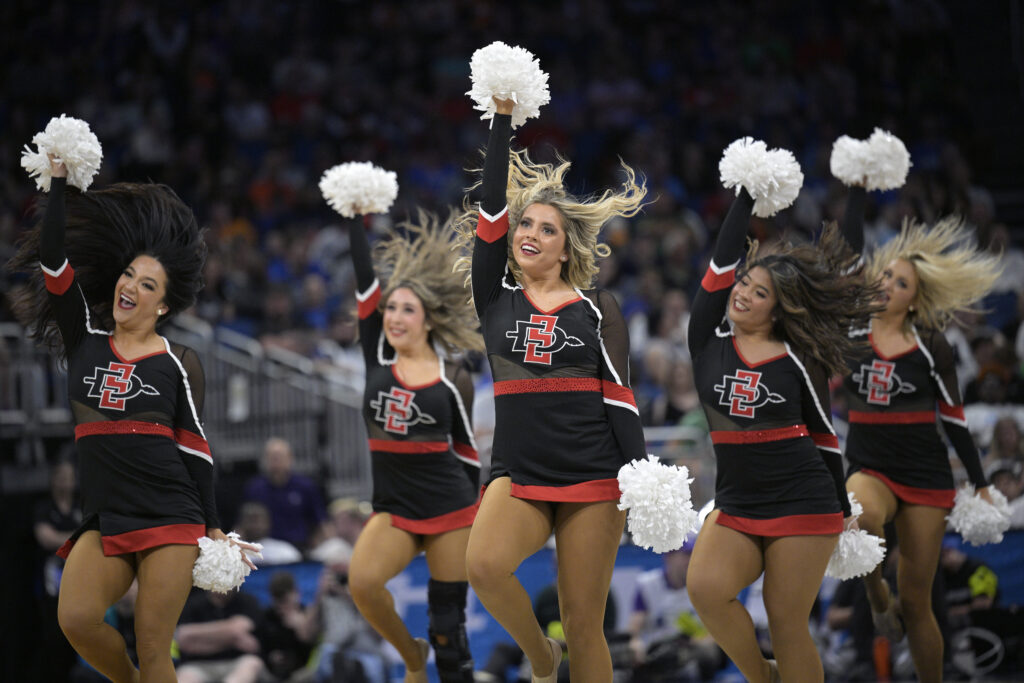Gloria Nevarez took charge of the Mountain West on New Year’s Day and spent approximately six months formulating a strategic plan to power the conference into the next era of college sports. She’s scheduled to present the blueprint to her membership later this month.
“We went broad and deep,” Nevarez said recently. “We brought someone in to help us through the process. We got input from … over 10,000 survey responses.”
Our guess: Her presentation has changed.
The collapse of the Pac-12 late last week will have a deep impact on the Mountain West’s future on multiple fronts. The conference could get stronger or weaker but is unlikely to remain static in membership by the turn of the decade.
If the remaining schools in the Pac-12 (Stanford, Cal, Washington State and Oregon State) stick together, they could raid the Mountain West and grab the top football schools.
If Stanford and Cal are able to join either the ACC or Big Ten — resolution could come this week — then WSU and OSU are expected to seek membership in the Mountain West.
One outcome seems unlikely: Stanford and Cal entering the Mountain West in a traditional merger that creates a 16-team league.
Nevarez has declined to comment on the demise of the Pac-12, which lost Washington and Oregon to the Big Ten and Arizona, Arizona State and Utah to the Big 12 — all during a dramatic 12-hour stretch Friday that changed the college sports landscape forever.
The conference is near and dear to her heart. She grew up in the Bay Area, has a law degree from Cal and spent years on the Pac-12’s executive staff under former commissioner Larry Scott.
And she is well aware that the Pac-12, as vulnerable as it appears, has the potential to poach. If the conference reforms, it could pursue San Diego State, Fresno State and Boise State.
“As long as you are in the middle of the ecosystem … the top of your (conference) is always going to be aspirational, and we have policies to deal with that,’’ Nevarez said on ‘Canzano and Wilner: The Podcast.’
“The policies are intended not to fully stop schools from leaving but to protect the league when and if they do. (The policies) provide enough of a financial exit fee so that we can either backfill with new members or rightsize any negative impact on our media contracts.”
Any Mountain West school intending to join the Pac-12 for the 2024 season would owe approximately $34 million in departure fees. That cost is steep, for sure, but the remaining Pac-12 schools might have the wherewithal to mitigate the damages if they withhold revenue from the eight outgoing members. (That situation has yet to be resolved.)
The exit fee for joining the Pac-12 in time for the 2025 season drops to $17 million — a reasonable sum for any “aspirational” Mountain West school.
And what if her league gets poached?
Nevarez works with a six-person subcommittee (three presidents and three athletic directors) to constantly evaluate membership options.
“We are scrubbing the entire environment for potential adds: Folks that might shake loose in other realignment that we could be aggressive about inviting and courting, or schools that have a lot of upward trajectory and potential,” she said.
Nevarez did not name names, of course. But potential additions could come from other Group of Five leagues or the Football Championship Subdivision (FCS).
This much is clear, whether it welcomes Washington State and Oregon State for 2024 or seeks to replace schools that move to the rebuilt Pac-12 in 2025: The Mountain West will be proactive.
“We have to take the realignment model that works, that aggressive mentality,” a conference source said, “and get people to come join us.”
In realignment, aggressive conferences survive; passive leagues collapse.
In the summer of 2021, the Big 12 was teetering. Texas and Oklahoma announced their moves to the SEC and the remaining schools were desperate for a lifeboat from the Pac-12 that never came. The Pac-12 university presidents concluded that none of the Big 12 schools added enough value (financial or competitive) to merit invitations.
Given a second life, the Big 12 saw strength in numbers and quickly added Brigham Young, Houston, Cincinnati and UCF. Two years later, it’s stable and thriving while the Pac-12 is decimated.
Lesson learned, the Mountain West is ready to pounce.
“We are constantly looking at who might fit the model that if we lost more than one school in this round, that we could add that might fill out the family,” Nevarez said.
Would the conference swoop into the Southern Plains and attempt to grab UTSA and North Texas?
Could it look east and grab Memphis?
Are options in the FCS, including powerhouse North Dakota State, under consideration?
This much is sure: Only two teams would be no-brainers for the Mountain West — Oregon State and Washington State.
If Stanford and Cal don’t stick around to rebuild the Pac-4, look for the Cougars and Beavers to receive invitations from the MW at the first available opportunity.
*** Send suggestions, comments and tips (confidentiality guaranteed) to pac12hotline@bayareanewsgroup.com or call 408-920-5716
*** Follow me on Twitter: @WilnerHotline
*** Pac-12 Hotline is not endorsed or sponsored by the Pac-12 Conference, and the views expressed herein do not necessarily reflect the views of the Conference.
Related posts:
 Wilner Mailbag -DEFCON 1 realignment scenario, should Oregon, Washington, UCLA and USC leave the conference?
Wilner Mailbag -DEFCON 1 realignment scenario, should Oregon, Washington, UCLA and USC leave the conference?

(AP Photo/Marcio Jose Sanchez)
Business of Sports – Updated Power Five revenue projections show Pac-12 deficit expanding as COVID hits, ACC Network grows and Big Ten, SEC rake in the cash
(Michael Malone/Bay Area News Group)
Wilner Hotline – Pac-12 to jump-start media rights negotiations after thunderbolt from Los Angeles VIDEO – Thursday July 7th Jon Wilner and Brad chop it up on Pac-12 future
VIDEO – Thursday July 7th Jon Wilner and Brad chop it up on Pac-12 future
Jon Wilner
Jon Wilner has been covering college sports for decades and is an AP top-25 football and basketball voter as well as a Heisman Trophy voter. He was named Beat Writer of the Year in 2013 by the Football Writers Association of America for his coverage of the Pac-12, won first place for feature writing in 2016 in the Associated Press Sports Editors writing contest and is a five-time APSE honoree.
